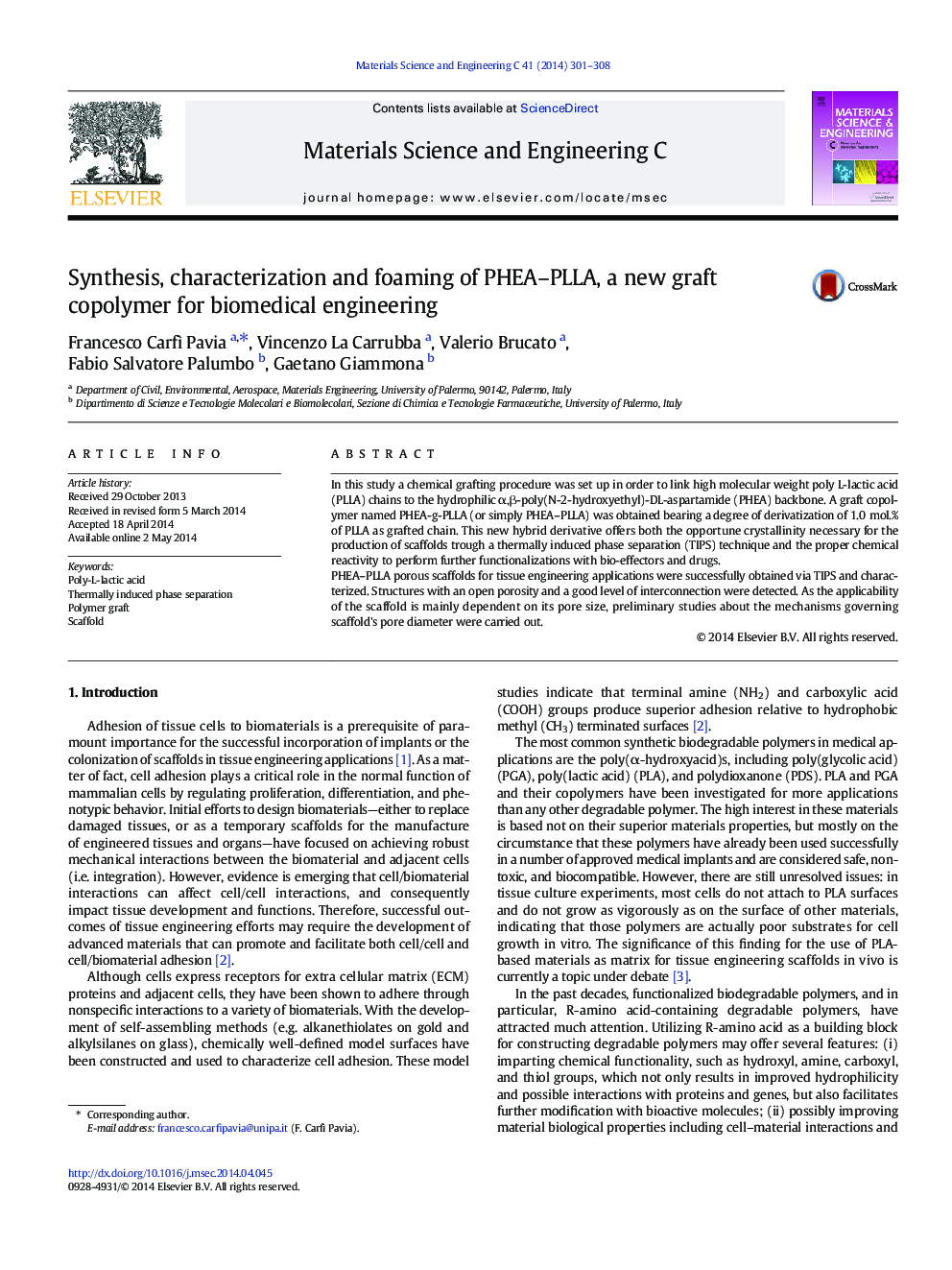| Article ID | Journal | Published Year | Pages | File Type |
|---|---|---|---|---|
| 1428740 | Materials Science and Engineering: C | 2014 | 8 Pages |
•PHEA–PLLA, a copolymer for tissue engineering was synthesized and characterized.•PHEA–PLLA porous foams were produced via TIPS•A relation between foam's pore size and experimental parameters was detected.•The possibility to obtain foams with different crystallinities was demonstrated.
In this study a chemical grafting procedure was set up in order to link high molecular weight poly L-lactic acid (PLLA) chains to the hydrophilic α,β-poly(N-2-hydroxyethyl)-DL-aspartamide (PHEA) backbone. A graft copolymer named PHEA-g-PLLA (or simply PHEA–PLLA) was obtained bearing a degree of derivatization of 1.0 mol.% of PLLA as grafted chain. This new hybrid derivative offers both the opportune crystallinity necessary for the production of scaffolds trough a thermally induced phase separation (TIPS) technique and the proper chemical reactivity to perform further functionalizations with bio-effectors and drugs.PHEA–PLLA porous scaffolds for tissue engineering applications were successfully obtained via TIPS and characterized. Structures with an open porosity and a good level of interconnection were detected. As the applicability of the scaffold is mainly dependent on its pore size, preliminary studies about the mechanisms governing scaffold's pore diameter were carried out.
Graphical abstractFigure optionsDownload full-size imageDownload as PowerPoint slide
